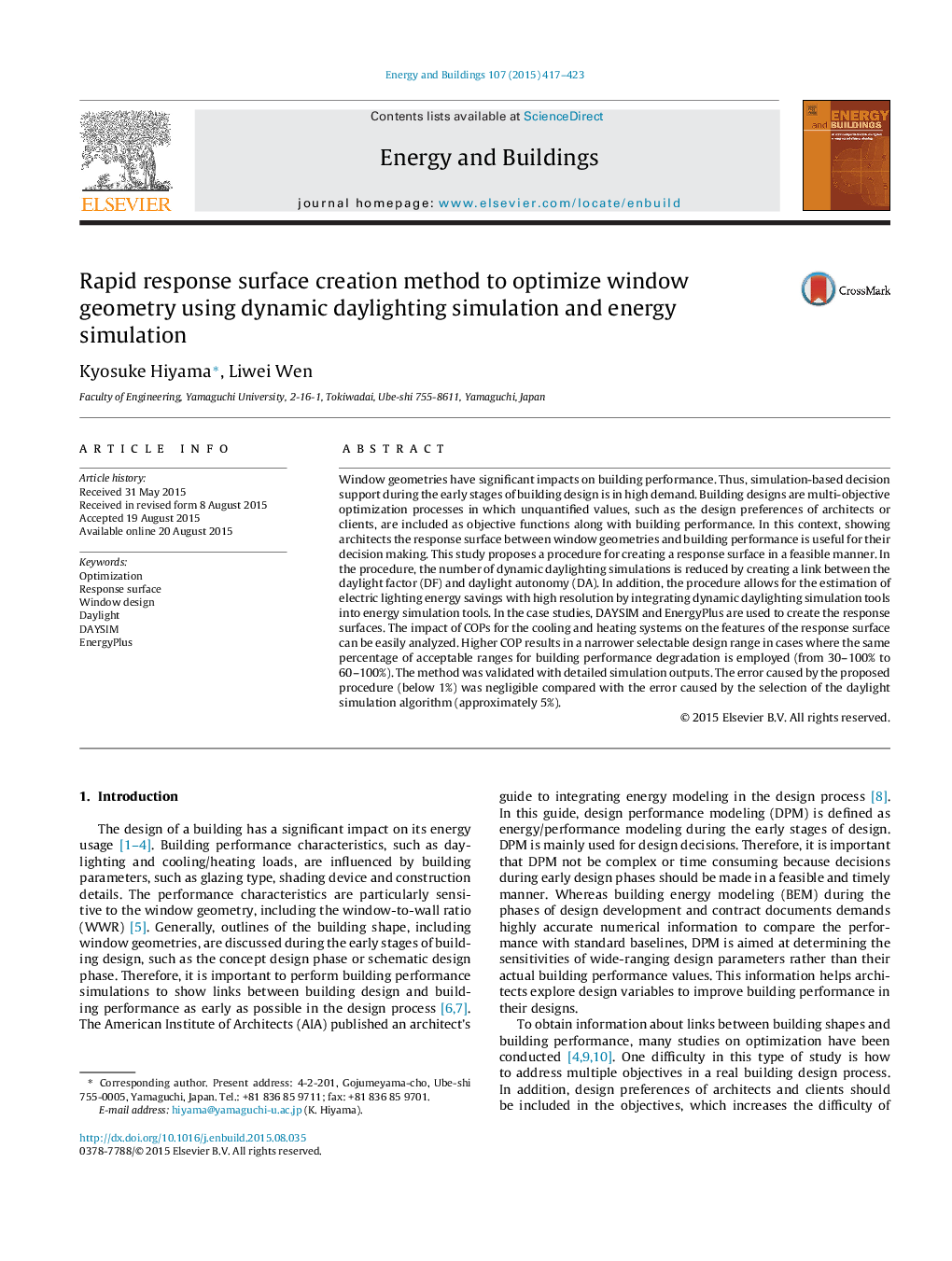| کد مقاله | کد نشریه | سال انتشار | مقاله انگلیسی | نسخه تمام متن |
|---|---|---|---|---|
| 262360 | 504029 | 2015 | 7 صفحه PDF | دانلود رایگان |
• Simulation-based decision support during early design stages is in high demand.
• A response surface between geometries and performance is useful.
• A procedure for creating the response surface in a feasible manner is proposed.
• A link between daylight factor and daylight autonomy reduces calculation load.
• The procedure integrates dynamic daylighting simulation into energy simulation.
Window geometries have significant impacts on building performance. Thus, simulation-based decision support during the early stages of building design is in high demand. Building designs are multi-objective optimization processes in which unquantified values, such as the design preferences of architects or clients, are included as objective functions along with building performance. In this context, showing architects the response surface between window geometries and building performance is useful for their decision making. This study proposes a procedure for creating a response surface in a feasible manner. In the procedure, the number of dynamic daylighting simulations is reduced by creating a link between the daylight factor (DF) and daylight autonomy (DA). In addition, the procedure allows for the estimation of electric lighting energy savings with high resolution by integrating dynamic daylighting simulation tools into energy simulation tools. In the case studies, DAYSIM and EnergyPlus are used to create the response surfaces. The impact of COPs for the cooling and heating systems on the features of the response surface can be easily analyzed. Higher COP results in a narrower selectable design range in cases where the same percentage of acceptable ranges for building performance degradation is employed (from 30–100% to 60–100%). The method was validated with detailed simulation outputs. The error caused by the proposed procedure (below 1%) was negligible compared with the error caused by the selection of the daylight simulation algorithm (approximately 5%).
Journal: Energy and Buildings - Volume 107, 15 November 2015, Pages 417–423
